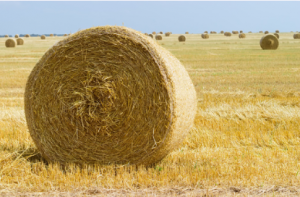Baling twine is essential to the baling process, but how do you choose the right type? The best baling twine has the proper weight, dimensions, and meter-weight ratio (weight per linear foot). High-quality twine is designed for maximum output. The baling twine used in pressed fodder needs to be able to resist breaking and elongation. For maximum baling performance, select virgin plastic resin twine with an 80% meter-weight ratio.
 Baler twine from silagewrap.com.au/small-square-baling-twine/ comes in two varieties: braided and cross-strand. Bales tied with square twines have a thicker core than round bales and require a thicker twine. In addition, balers should be tied with UV-protected twine to ensure maximum efficiency and quality. While twines made with recycled twine are usually eco-friendly, virgin twine can be contaminated by the hay and used in other baling processes.
Baler twine from silagewrap.com.au/small-square-baling-twine/ comes in two varieties: braided and cross-strand. Bales tied with square twines have a thicker core than round bales and require a thicker twine. In addition, balers should be tied with UV-protected twine to ensure maximum efficiency and quality. While twines made with recycled twine are usually eco-friendly, virgin twine can be contaminated by the hay and used in other baling processes.
When wrapped around a round bale, baling twine helps prevent loose wood from shifting during transport. It is available in many lengths and sizes and can quickly secure round bales for transport. Although bales are lightweight, they tend to break during transport. With a baling twine, you can easily staple a round bale together without support. It would be best if you used baling twine for several reasons, and they all have practical applications.
Although baling twine is commonly used for baling hay, it has many other uses. Besides its primary use as a baling material, it can also be used as a hay net to support vegetables. For example, Baling twine can be used to construct several baskets. These can be used for storing keys and displaying produce. And if you have an old wooden chair in your home, you can use baling twine to create a new seat for it.
Baling twine is an environmentally-friendly material. Farmers can recycle baler twine by using it to make bags and then drying it afterwards. Once dried, the twine can be recycled in several ways, including compost, recycling, and reusing. It’s an easy, hassle-free way to get rid of an old piece of twine. So, make use of baling twine to reduce your impact on the environment.
Balers twine is available in many types, including braided, cross-stick, and spiral-shaped. It can also be used as a feeding material. In addition, there are several other uses for baling twine, including packaging and storing hay. But regardless of its use, a baler needs to be versatile in its uses. When used correctly, it can increase farm productivity and improve production speed.
Baling twine is also biodegradable. Its biodegradable properties make it a cost-effective and eco-friendly option, and it is made from durable polypropylene. In addition, its soft fibres will not rot and will last a long time. To purchase baling twine, visit a local feed store or order online. And don’t forget to purchase extra twine for your baling processes.
Baling twine has two types. Sisal baler twine is made from sisal fibre, while polypropylene baler twine is made from synthetic fibre. The tensile strength of polypropylene twine is 95-350 psi, which is suitable for various agricultural applications. These twines are durable and long-lasting, and they help in boosting the yield of your crops. It is easy to purchase baling twine online, and suppliers can conveniently deliver materials to your premises.
In addition to being a multipurpose tool, baling twine also has other uses. For example, you can use it as a belt substitute for cow, goat, or sheep pants. It can also be used to fix broken tailgate cables. You can also use it to make replacement sled handles and use it to make an emergency work sled. The possibilities are endless. With this handy item, it’s easy to make an excellent hat for your horse, a paper towel holder for your horse, and many other things.

Leave a Reply